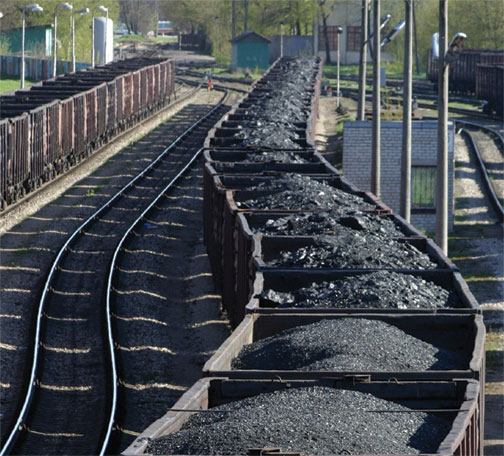
U.S. Shifts Away from Coal and Toward Natural Gas
Natural gas overtook coal as the top source of US electric power generation for the first time ever this spring. Natural gas accounted for 31% of electric power generation while coal accounted for 30%, according to a report released by SNL Energy. Nuclear energy came in at third with 20%. This shift is not surprising, however, as natural gas prices have continued their downward slide and new regulations that the EPA is beginning to implement make utilities question the future of coal. This is a much-needed step toward improving US energy security, production, and efficiency.
 While increased power generation via natural gas is a positive development, it is not surprising. The US shale boom that started about a decade ago has increased domestic natural gas production by 30% and made the US the world’s largest combined producer of oil and natural gas. This shale gas produces roughly half of coal’s carbon dioxide emissions and is abundantly available. Indeed, shale gas beats out coal on price point alone. As a result, the US coal industry is in a heavy decline. The Energy Information Administration expects coal production to fall by about 7.5% this year, and shares of large US coal producers like Peabody Energy and Arch Coal have dropped significantly.
While increased power generation via natural gas is a positive development, it is not surprising. The US shale boom that started about a decade ago has increased domestic natural gas production by 30% and made the US the world’s largest combined producer of oil and natural gas. This shale gas produces roughly half of coal’s carbon dioxide emissions and is abundantly available. Indeed, shale gas beats out coal on price point alone. As a result, the US coal industry is in a heavy decline. The Energy Information Administration expects coal production to fall by about 7.5% this year, and shares of large US coal producers like Peabody Energy and Arch Coal have dropped significantly.
The benefits of a shift toward natural gas and away from coal are clear. Coal is the highest emitting fossil fuel, with 1 short ton (2,000 pounds) emitting about 5,720 pounds of carbon dioxide. Thus, coal represents a clear threat to the climate and environment, and the EPA has pressed for more restrictions on its mining and use. Shifting away from coal and towards natural gas to meet US energy needs is also economically responsible. As of early July, natural gas prices were just under $3.00/MMBtu, or $3.00 per 1 million British thermal units. Increased natural gas production presents export opportunities for the US as well. Secretary of Energy Ernest Moniz announced plans earlier this year for the export of LNG. Asia would seem a natural destination, with nations like China and India among their largest energy consumers.
Although natural gas is a preferable alternative to coal, it is not without issues of its own. The extraction method for natural gas in the US- known as fracking- has been linked to several environmental problems, namely water/air pollution and methane emissions. It is important that this extraction method continues to improve in an effort to mitigate the potential negative effects on the environment and climate.
Taken together, the characteristics of increased reliance on, and production of, natural gas are overwhelmingly positive. Movement away from coal has the dual benefit of protecting the climate and promoting US economic competitiveness worldwide.
William George is a Junior Adjunct Fellow for the American Security Project covering energy and climate security.





